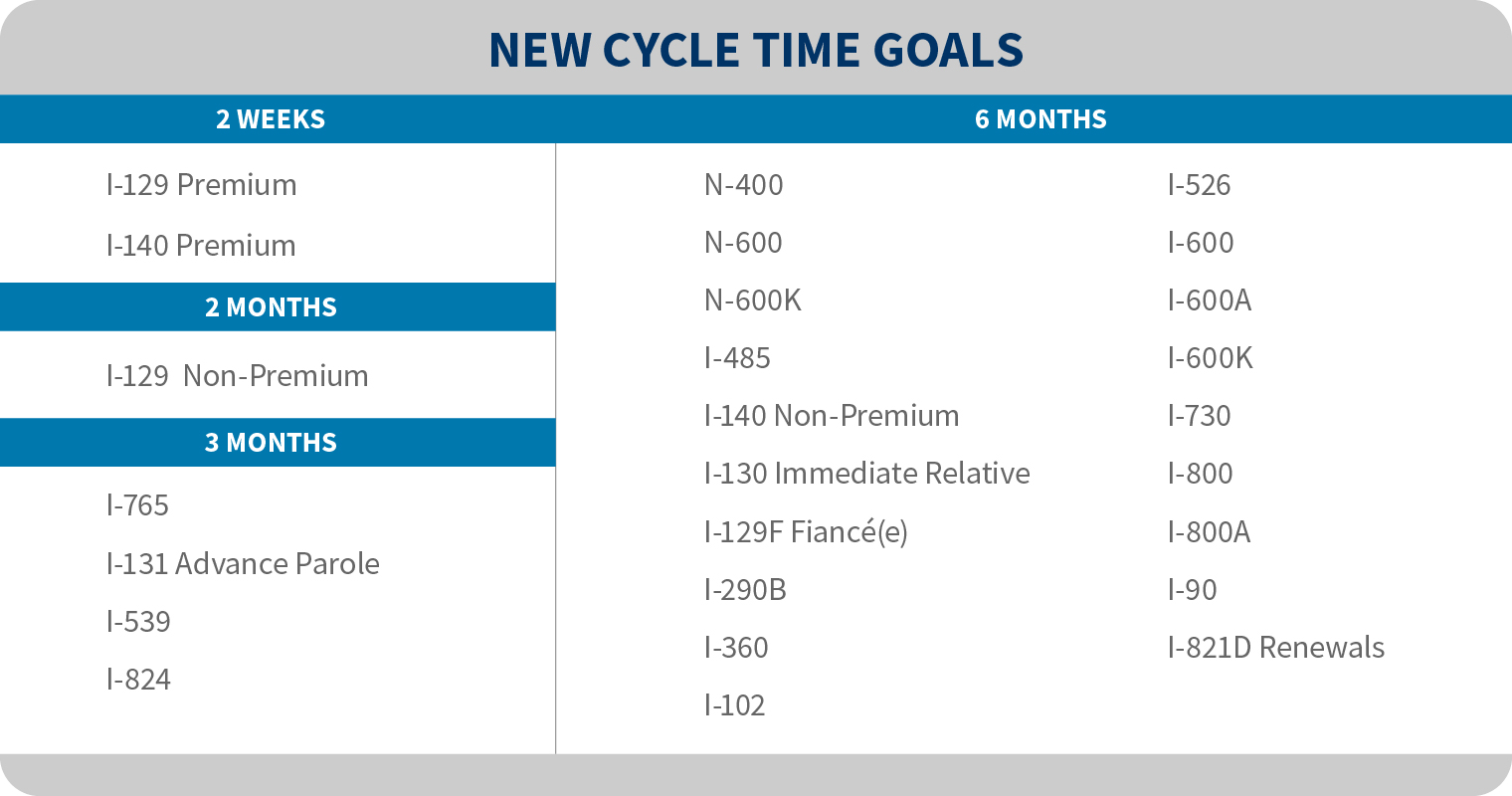WASHINGTON— Today on 03/29/2022, U.S. Citizenship and Immigration Services is announcing a trio of efforts to increase efficiency and reduce burdens to the overall legal immigration system. USCIS will set new agency-wide backlog reduction goals, expand premium processing to additional form types, and work to improve timely access to employment authorization documents. Due to the COVID-19 pandemic and resource constraints resulting from the prior administration, USCIS inherited a significant number of pending cases and increased processing times. Through today’s actions by the Biden administration, USCIS is acting to reduce these caseloads and processing times, while also ensuring that fair and efficient services are available to applicants and petitioners.
“USCIS remains committed to delivering timely and fair decisions to all we serve,” said USCIS Director Ur M. Jaddou. “Every application we adjudicate represents the hopes and dreams of immigrants and their families, as well as their critical immediate needs such as financial stability and humanitarian protection.”
Reducing Processing Backlogs
To reduce the agency’s pending caseload, USCIS is establishing new internal cycle time goals this month. These goals are internal metrics that guide the backlog reduction efforts of the USCIS workforce and affect how long it takes the agency to process cases. As cycle times improve, processing times will follow, and applicants and petitioners will receive decisions on their cases more quickly. USCIS will increase capacity, improve technology, and expand staffing to achieve these new goals by the end of FY 2023.
The agency’s publicly posted processing times show the average amount of time it took USCIS to process a particular form – from when the agency received the application until a decision was made on the case. Internally, USCIS monitors the number of pending cases in the agency’s workload through a metric called “cycle times.” A cycle time measures how many months’ worth of pending cases for a particular form are awaiting a decision. As an internal management metric, cycle times are generally comparable to the agency’s publicly posted median processing times. Cycle times are what the operational divisions of USCIS use to gauge how much progress the agency is, or is not, making on reducing our backlog and overall case processing times.

Expanding Premium Processing
Today the Department of Homeland Security (DHS) announced a final rule that aligns premium processing regulations with the Emergency Stopgap USCIS Stabilization Act. The rule codifies premium processing fees and adjudication timeframes provided by Congress.
Premium processing is an expedited adjudication service now available only to petitioners filing a Form I-129, Petition for a Nonimmigrant Worker, and to certain employment-based immigrant visa petitioners filing a Form I-140, Immigrant Petition for Alien Workers. This final rule expands the categories of forms ultimately eligible for premium processing services, including Form I-539, Application to Extend/Change Nonimmigrant Status; Form I-765, Application for Employment Authorization; and additional classifications under Form I-140.
USCIS intends to begin implementing, through a phased approach, premium processing availability of Form I-539, Form I-765 and Form I-140 in fiscal year 2022. USCIS will also adhere to the congressional requirement that the expansion of premium processing must not cause an increase in processing times for regular immigration benefit requests.
USCIS plans to begin this phased implementation process by expanding premium processing eligibility to Form I-140 filers requesting EB-1 immigrant classification as a multinational executive or manager, or EB-2 immigrant classification as a member of professions with advanced degrees or exceptional ability seeking a national interest waiver.
Improving Access to Employment Authorization Documents
USCIS continues to make progress toward a temporary final rule currently named “Temporary Increase of the Automatic Extension Period of Employment Authorization and Documentation for Certain Renewal Applicants.”
In recent months, USCIS has begin streamlining many EAD processes, including extending validity periods for certain EADs and providing expedited work authorization renewals for healthcare and childcare workers. The temporary final rule aims to build on this progress and to ensure certain individuals will not lose their work authorization status while their applications are pending.


